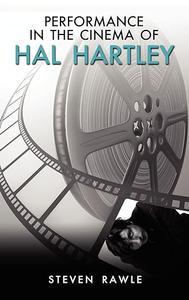
Free Download Steven Rawle, "Performance in the Cinema of Hal Hartley"
English | 2011 | pages: 361 | ISBN: 1604977450 | PDF | 1,7 mb
Hal Hartley was one of the leading lights of the independent American cinema boom of the late 1980s and 1990s. Although his work never achieved the kind of crossover commercial success that other indie directors experienced, his work exhibits one of the most distinctive voices in recent American cinema. Combining wry, aphoristic dialogue with stylized performances and a muted, minimalist palette, Hartley's films challenge cinematic conventions, especially in performance, and resist easy empathetic identification. His later work has carved out an even more specific niche, and, since 1999, his work has often explored extreme digital stylization. Winner of the best screenplay award at the Cannes film festival in 1998 for Henry Fool, Hartley is best known for his films in the early-mid 1990s, including The Unbelievable Truth (1989), Trust (1990), Simple Men (1992), and Amateur (1994). His subsequent work has become more challenging, often examining the cultural role of the artist and the role of the work of art in the information age, as in Flirt (1995) and Henry Fool. Hartley has also experimented with digital video in his more recent work, including The Book of Life (1999), The Girl from Monday (2005), and Fay Grim (2006). Furthermore, he is well known as a prolific short filmmaker, including Surviving Desire (1991), Ambition (1991), Theory of Achievement (1991), The New Math(s) (1999) and two collections of short works released under his Possible Films label (2006 & 2010). The short films are experimental, formally challenging, and highly self-reflexive, capturing Hartley's approach in its purest form. With this first critical study of Hal Hartley's work, Steven Rawle examines the physical and cultural performance practices at play in Hartley's work. Focusing on the critical emphasis on performance and the performer in Hartley's work, the book charts the development of this central facet of his films, from The Unbelievable Truth to the digital features. Identifying the main critical approaches to performance that illuminate this trend in his work, Rawle delves into the reasons why Hartley's work has never gained popular recognition and explores why critical reactions to his films have never fully grasped the complete significance of performance. Part of this reason, Rawle argues, is the lack of critical tools by which to explore film performance. This book contributes to a growing body of work on film performance, taking this formerly critically neglected figure as its central case study. This book will be an important book for fans of Hartley's work as well as scholars of independent American cinema and of film performance.
